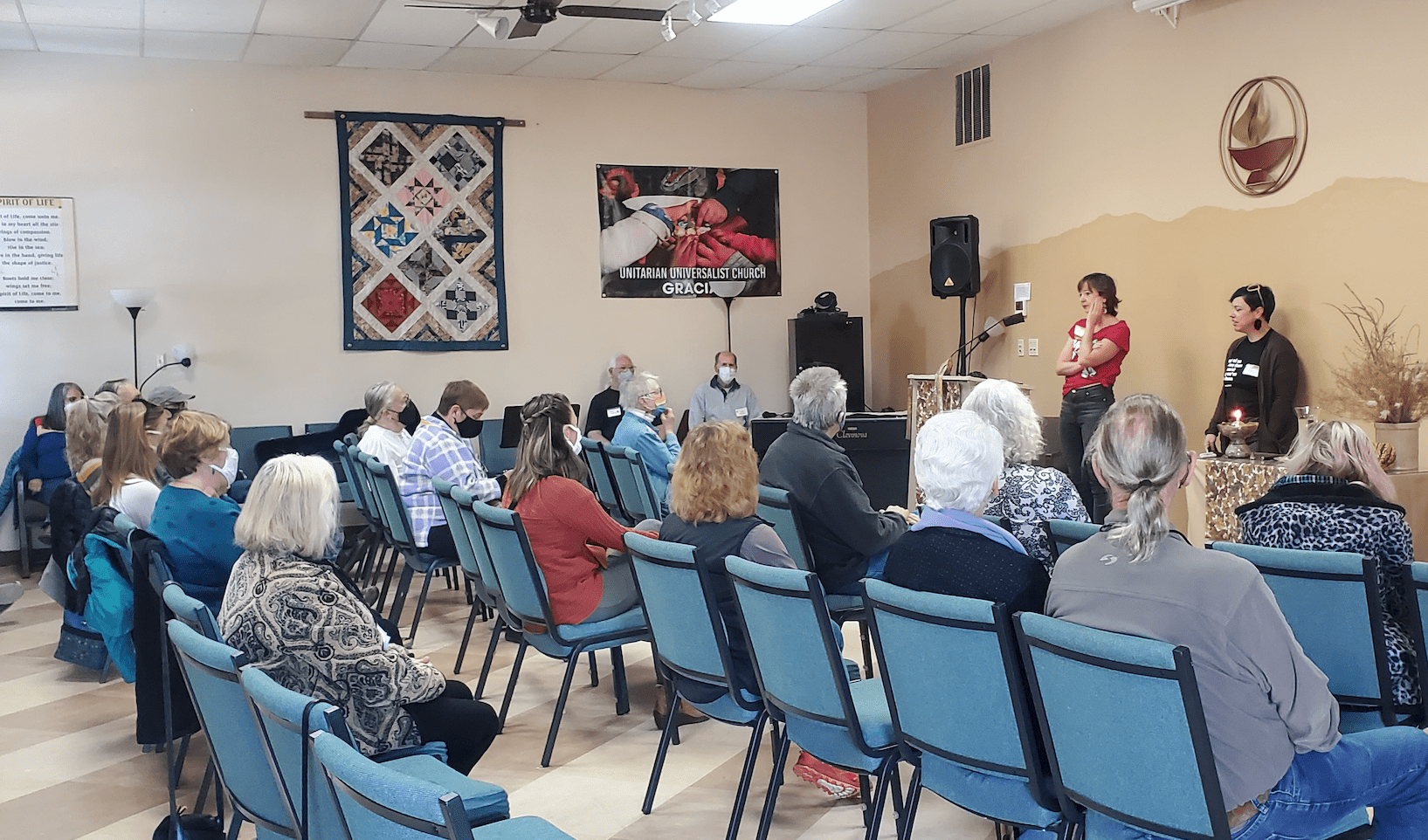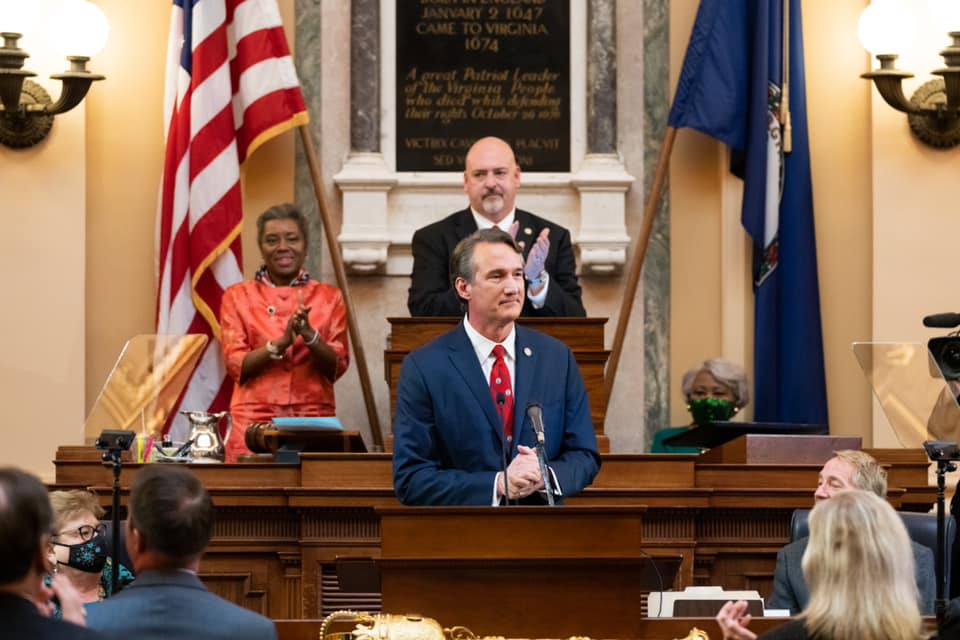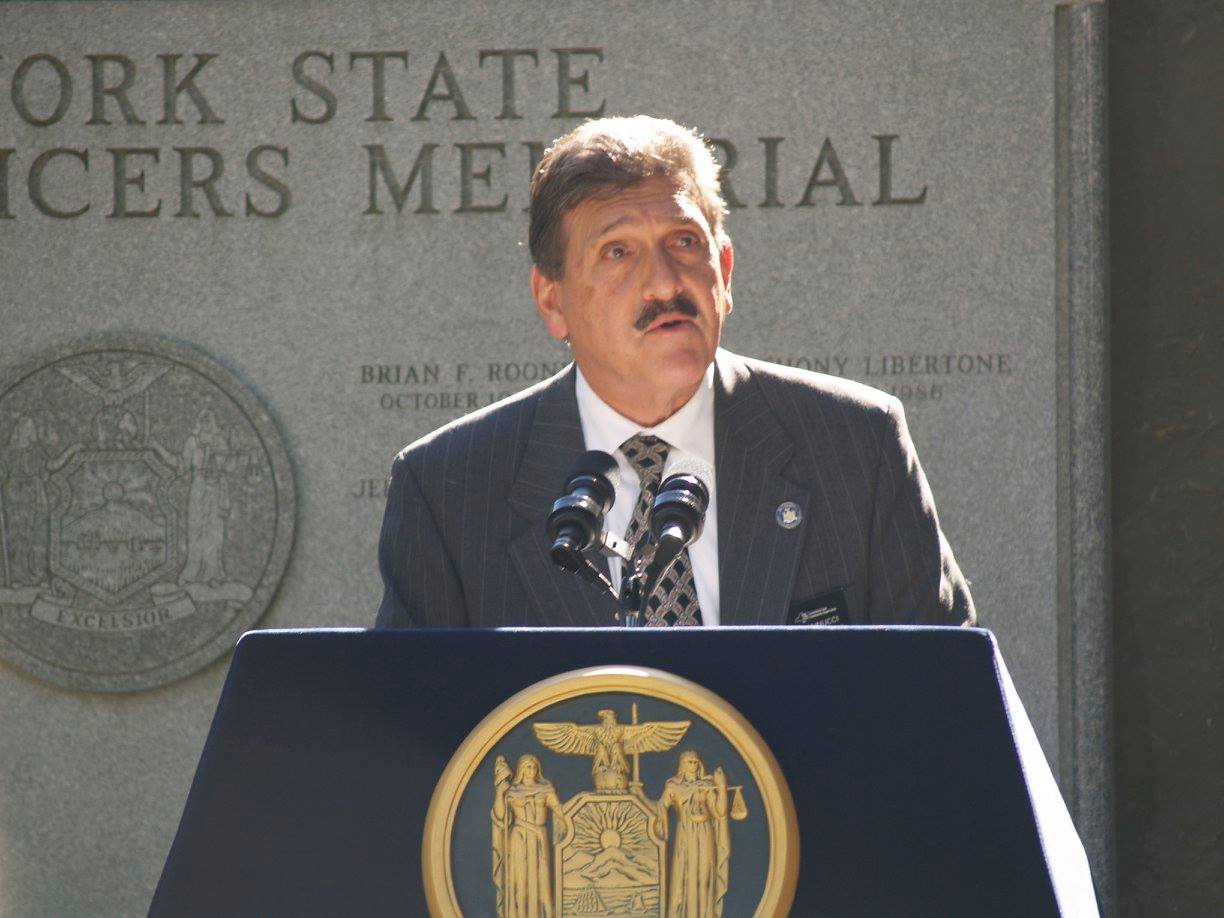“Just an Opportunity to Come Home”
Illinois, Minnesota, and New Mexico this year abolished sentences of life without parole for juveniles. Now comes the hard part.
Daniel Nichanian | June 29, 2023


For more than 25 years, Mike Rose felt alone. After his son Jeremy was arrested at age 17 in 1994, sentenced to life in prison, Mike and his wife had no community with which to share the pain of losing a son to prison. “In the battle to help your loved ones, it feels like you’re by yourself, fighting this battle on your own,” he says. Jeremy was shipped to an out-of-state prison, as New Mexico does with many kids serving long sentences, deepening his parents’ isolation.
Then, about four years ago, Mike says his world opened up after he stumbled upon a coalition that had assembled in New Mexico to fight extreme sentences imposed on children.
“It was like a breath of fresh air,” he told Bolts. “I was able to join them and it’s like, I’m not by myself anymore. We’ve got resources, we’ve got people who are in the same situation, we can pull our knowledge and our strengths and start working on the passage of legislation. It was a godsend.”
The coalition has for years pushed legislation to give every ‘juvenile lifer’ a meaningful chance at release, which faltered in repeated legislative sessions until they finally succeeded this spring: In March, lawmakers adopted Senate Bill 64, a law abolishing sentences of life without parole for children.
The law also addresses other extreme sentences by making anyone convicted of a crime they committed under the age of 18 eligible for parole hearings—usually after 15 years in prison, though in some cases after 20 or 25 years behind bars.
“In a moment of pretty extreme political polarization around crime and public safety, our community was able to pass one of the more progressive juvenile parole laws in the country, and we did it with bipartisan support,” said Denali Wilson, an attorney at the ACLU of New Mexico who co-founded this coalition, though she also stresses that 15 years remains too long a time. “For people that went to prison when they were 15-16 years old, we’re talking about a lifetime to wait for just an opportunity—just an opportunity to come home.”
The law does not guarantee release for anyone. It only provides review by a parole board, a shot to showcase one’s rehabilitation inside and ask for a second chance that the governor-appointed board can still deny. Many people newly eligible for review will still likely remain in prison for decades.
Still, Mike Rose calls himself “eternally optimistic” and says the law’s passage opens the door to having his son home by the end of the year. Jeremy, who was convicted of murder alongside two other minors for the stabbing deaths of two elderly people three decades ago, received a sentence that made him eligible for parole after 30 years in prison, and likely would have had a parole hearing next near even without the new law. But Mike, whose wife died of cancer two years ago without seeing her son have a hearing, is keenly aware of what shaving even just a few years off his sentence could have meant—and now he’s eager to help others besides his son get a second look.
“He left a boy of 17 and hopefully I get the opportunity to have him here shortly as a man of 47,” Mike said of his son. “There’s a huge push across the country to recognize the fact that we as a society cannot sentence our juveniles to a life behind bars… You’re not doing things to solve the crime problem, what you’re doing is throwing the next generation away.”
So far in 2023, two other states besides New Mexico have adopted similar reforms, making people convicted as children eligible for release after some lengthy term of incarceration: Illinois with House Bill 1064 in February, and Minnesota, which included the reforms in a large public safety package, in May.
They are just the latest states to adopt such laws over the last decade, ever since the U.S. Supreme Court issued a series of decisions in the late 2000s and early 2010s affirming that minors deserve “meaningful opportunities to obtain release.” The laws passed in New Mexico, Illinois and Minnesota mean there will now be 28 states that no longer sentence kids to life without parole.


“Every state that ends the practice of condemning children to die in prison creates pressure for the next state to do so,” said Preston Shipp, a policy counsel with the Campaign for the Fair Sentencing of Youth, a national organization that is helping spread those reforms.
Shipp traveled to Santa Fe and St. Paul this year to lobby lawmakers and share information about the many similar reforms that have already been implemented elsewhere, pointing to the low recidivism rate for people who have been released on parole in other states. He also tries to talk to lawmakers about research in neuroscience and psychology showing developmental differences between adults and youth.
“We know from the science of adolescent brain development that [kids] don’t appreciate all the consequences of their conduct; peer pressure hits differently,” Shipp said. ”In a flash point, this person does something that’s tragic, and it changes people’s lives, but it doesn’t mean that they cannot experience rehabilitation. It doesn’t mean that they’re beyond the hope of redemption.”
More states could soon make reforms. Shipp has traveled to Lansing three times this year to help bills that would end juvenile life without parole in Michigan. Connecticut already adopted similar reforms in 2015 for kids under age 18, but in June lawmakers passed a bill that extends parole eligibility to people with long sentences who were convicted before age 21. (The new Illinois law also applies to people up to age 21.) That measure now goes to Governor Ned Lamont, a Democrat who has blocked other efforts to curtail long sentences for juveniles.
Despite the similarities, the youth sentencing reforms that three states have passed so far this year will vary widely in actual impact. In Illinois, people already serving extreme sentences for juvenile convictions are still set to spend their lives behind bars without review: The bill that passed this year—just like the 2019 law it builds on—isn’t retroactive.
In New Mexico and Minnesota, by contrast, dozens of people incarcerated for decades are now suddenly poised to receive parole hearings very soon because of the new laws. “There are just a lot of people who have spent a lot of time in prison being introspective and growing and developing into adults,” State Representative Sandra Feist, a Democrat who helped shape Minnesota’s legislation, told Bolts. “And I’m just excited for them to get a second chance.”
For advocates like Wilson who hope to reduce the prison population and spent years guiding these bills through the state legislatures, that effort was just about setting up the difficult parole processes that are only now starting.
“It’s the moment that our community has been preparing for,” Wilson said. “We knew that passing the law was only the first step. Making the law mean something, making it mean real opportunity for people to come home, is the next chapter.”
The states that adopted new juvenile sentencing reforms this year significantly limited if not eliminated discretionary parole in the late 1970s and early 1980s, a period during which many states toughened sentencing and gutted paths to release throughout the country. That gives advocates a chance to start fresh—after all, established parole boards are typically dysfunctional and punitive—but creating a new process out of virtually nothing is also a daunting task.
Wilson warns that legal services in New Mexico aren’t trained to counsel the people who are newly eligible for parole, even as their hearings are coming up soon. “The work ahead is happening outside of existing institutions in the state because this is new work,” she said. “This reform was passed without any kind of budget allocation from the state, and so much of the work is around shoring up resources to make sure that people are supported in the way that they deserve.” Wilson has set up an organization, Deserving Life, that’s crowdfunding to help provide people with this support.
Wilson says she knows of at least 75 people incarcerated in New Mexico who were given decades-long sentences for crimes they committed as minors and will be affected by SB 64. More than half are already eligible for a hearing under the new law because they’ve served more than the minimum period (15 to 25 years, depending on the crime). The actual number is likely higher: ProPublica exposed in March how the state lost track of nearly two dozen people locked up since they were sentenced to life in prison as kids.
Meanwhile, close to 100 people will be affected by Minnesota’s new law, according to Perry Moriearty, who helps run a law clinic at the University of Minnesota that represents “juvenile lifers” and played a central role in crafting and championing the reforms over the last decade. In Minnesota, like in New Mexico, most people will be eligible after 15 years in prison, though it will be longer for some categories of crimes. Moriearty says nearly half have been in prison long enough that they are already eligible for a hearing.
But the panel that will review these cases doesn’t even exist yet. Minnesota lawmakers this spring created a brand new review board that must still be staffed. For cases that involve people who were sentenced as minors, that five-member board will be supplemented by two additional members who must be experts in neurodevelopmental science.
Advocates for the law say these two additional members will be critical to remind the rest of the board of what makes youth different. “One of the things that neurodevelopmental experts may be able to speak to is why, with a lot of kids who are incarcerated, the first few years look bumpy,” said Moriearty, the University of Minnesota professor. “For kids who are told that they’re entering prison and they’re gonna die there, there tend to be more infractions in those early years.”
Avra Anagnostis was 14 when her 16-year-old best friend, Roberto Lopez-Rios, was arrested and sentenced to life in Minnesota in 2001. “Life in prison, obviously, as kids, we couldn’t really comprehend what that meant,” she told Bolts. “It sounded so scary and overwhelming.”
For more than two decades, Anagnostis has advocated for her friend to get a second look. She and Lopez-Rios co-founded an organization called Juvenile Sentencing Reform MN, paired up with Moriearty to advocate for reform, and reached out to people who have been incarcerated since they were kids. “Some of these guys are really alone,” she said. “Several have never had anyone reach out to them.”
“For them to know that this group of people was coming together, people that they’ve never met, and advocating for them and saying, you are more than the worst thing you did as a child, that was huge,” she added.
From prison, Lopez-Rios has developed his painting, working with a group called Art from the Inside to have his art sold and shown at exhibitions. In April, this Minnesota-based organization hosted an art workshop in St. Paul alongside Juvenile Sentencing Reform MN that featured Moriearty and other coalition members talking about their bill.


Moriearty says that most kids sentenced to spend their life in prison in Minnesota come from Hennepin and Ramsey counties, which include the twin cities of Minneapolis and St. Paul, the most diverse area in the state—and that the vast majority, 81 percent, are also Black and Latinx. The prosecutors who represent these population centers—Ramsey County’s John Choi, who has long backed this issue, and Hennepin County’s Mary Moriarty, who was elected in November in a victory for progressives—both supported the reform this year.
Nevertheless, the statewide association of county attorneys opposed Minnesota’s bill this year. Robert Small, its executive director, told Bolts that the organization agreed with the principle of ending juvenile life without parole but thought that people should wait for longer periods before being eligible, and that the decision should be made by a judge and not by a parole board. Feist says the support her bill received from Choi and Moriarty helped counter the idea that local law enforcement was uniformly hostile to it.
New Mexico’s prosecutors association, which has a long history of torpedoing criminal justice reforms and opposed prior iterations of this bill, remained neutral on the 2023 version after extracting concessions that extended how long kids have to wait before becoming eligible for parole. (An earlier version of the bill made most minors eligible for parole after 10 years.)
Advocates in both New Mexico and Minnesota say they insisted the bills be retroactive, bringing hope to the very people who were championing them. They also pressed lawmakers to cover anyone who was convicted of a crime as a kid, no matter how serious.
“The reason why we are so adamant that there should not be carve outs is because this whole policy is all about the difference between kids and adults,” Shipp said. “It’s not about the nature of the offense.”
All three bills adopted this year passed Democratic-led legislatures and were then signed by Democratic governors. In each case, the opposition largely came from GOP ranks, even though the bills in Illinois and New Mexico each received Republican support. (Minnesota’s package, which incorporated many other reforms, passed on strict party lines.) Some GOP-run states have adopted similar legislation—most recently, Ohio in 2021.
In Illinois, a Republican state senator even played a lead role this year in pushing lawmakers to fix the fact that HB 1064 does not apply to past cases. In the same week Governor J.B. Pritzker signed it into law in February, Senator Seth Lewis filed new legislation, SB 2073, to make it retroactive. Lewis’ bill would also apply to an earlier sentencing reform that Illinois adopted in 2019, which curtailed juvenile life without parole but did not eliminate it. If it passes, it would make hundreds of people incarcerated since they were kids eligible for parole, according to Lindsey Hammond, policy director of the Chicago-based Restore Justice.
SB 2073 drew numerous Democratic co-sponsors but it received no vote by the end of the legislative session in May. Majority Leader Kimberly Lightford, a Democrat, did not respond to a request for comment on her plans for next year.


While the sentencing reforms in Illinois are limited to only new convictions, the state has still gone further than most others (including New Mexico and Minnesota) in another dimension: age.
Reforms that take a more rehabilitative approach to youth are traditionally written to apply to people who committed a crime before age 18, but the laws Illinois passed in 2019 and 2023 instead both draw the line at 21. Hammond says the usual arguments for treating kids differently apply to young adults too. “Eighteen isn’t a line that you magically become an adult,” she told Bolts. “The emerging brain science shows that our brains continue to develop till the mid-20s.”
Hammond says there was interest in the Illinois legislature to set the age of eligibility at 25: “Why are we stopping?”
Back in 2021, Washington, D.C., became the first jurisdiction to eliminate life without the possibility of parole for anyone convicted of a crime committed under age 25. Bolts reported last year that the reform sparked releases but at a slower pace than its proponents hoped for because of pandemic delays and recalcitrant prosecutors. Other states, like Massachusetts and Vermont, have also raised the age until which someone can be treated as a juvenile past 18. Connecticut could join that roster if its governor, Lamont, signs SB 952, the bill that ends life without parole for youth under 21.
People in other states are watching these developments closely. In Minnesota, Moriearty says they didn’t press raising the age of adult criminal liability in this year’s session but hopes to revisit it in the future. “We didn’t necessarily feel like we had time,” she says.
Some advocates also hope to build on these new laws to make a broader case: They wonder if re-opening the door to parole for juveniles may make people more receptive to the idea that we shouldn’t throw anyone away for life. They’re pushing for reforms to cap prison terms, expand parole hearings for the elderly, or guarantee everyone some form of “second look.”
“If we allow ourselves to believe or to entertain the possibility that a child is more than the worst thing that they’ve ever done,” Wilson says, “it’s really not that far of a leap for people to wonder if that may be true for everybody.”
Sign up and stay up-to-date
Our weekly newsletter on the local politics of criminal justice and voting rights




